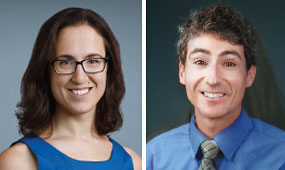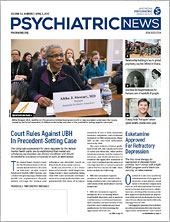Walking out of a Child Protective Services safety conference, 16-year-old Sara kicks the door. Her mother, her foster care agency’s caseworker, and the caseworker’s supervisor tense up beside her as Sara shakes her head and clenches her fists, muttering, “They said I might go home, and now it’s back to foster care, just like last time. This is the stuff that makes me want to kill myself.” The adults look at one another. Sarah’s mother speaks first: “See, she’s not safe in that foster home—she needs to be home with me!” The supervisor shakes her head: “She always says that, like all of the other kids when they don’t get their way. She’ll be fine; let’s go.” Sara’s caseworker addresses Sara: “Are you saying you don’t feel safe? Have you been taking your meds?” This incenses Sara and her mother further: “You’re not taking me to that psych ward again!” “This isn’t a mental problem- she just needs to be home!” The supervisor jumps in: “Ms. Washington, if you had completed your parenting class on time, then maybe. …” As the argument heats up, Sara bolts out the front door. She pauses for barely a moment to look around before darting across the busy street, cars screeching and honking around her.
Incidents like the above make youth like Sara “frequent fliers” in emergency departments and inpatient units. They challenge our diagnostic and risk assessment frameworks. Is Sara being manipulative or sarcastic, expressing her anger toward the judge’s decision, feeling defeated as her wish to return home will have to wait another 30-60 days, and/or truly considering suicide? Youth like Sara are a challenge to outpatient providers as well. What is the meaning of Sara’s impulsivity, moodiness, frequent rage outbursts, and suicidal statements? Is the core of her symptoms the irritability of depression or bipolar disorder, the intransigence of oppositional defiant disorder, or the avoidance of posttraumatic stress disorder (PTSD)? Sara won’t open up much in therapy, either sitting in silence or complaining about her foster family but shutting down or changing the subject every time the therapist tries to ask about Sara’s internal experience.
Limits of Current Diagnostic Models
Cases like Sara’s underscore the limitations of our current diagnoses. Adolescents in the child welfare system, like Sara, have high rates of psychiatric diagnoses. Their medical charts often list multiple hospitalizations and medication trials. But their charts rarely capture the terrible pain of ongoing trauma: of separation from family, of court dates where youth face the perpetrators of their abuse or those who failed to protect them, of constant fear of being sent back or of being sent away, of ongoing abuse or neglect in foster homes or within the family, of nightmares and flashbacks that have never been effectively treated, of not being heard or believed.
Complex PTSD, which will soon be added to the International Classification of Diseases in the ICD-11, attempts to better represent the severe impact of childhood trauma and the complexity of symptoms that follow, including mood and anxiety symptoms, behavioral dysregulation, and attention and memory problems. It is hoped that this new diagnosis will lend diagnostic clarity for youth who have experienced trauma and focus their treatment on achieving safety (both physical and psychological) and processing what they have lived through.
Engaging and Treating Youth With Complex PTSD
Even with clarity on diagnosis and treatment, identifying trauma-exposed youth and engaging them in trauma-focused treatment can be difficult. Many teens exposed to trauma develop a guarded, dismissive attitude to evade those they fear may attempt to discuss the trauma or the painful/shameful emotions that surround it. The concept of “universal trauma precautions” suggests that we should assume all youth (especially those in child welfare) have experienced trauma, but asking them directly about it must be done with skill and nuance to overcome the youth’s trauma-related avoidance. Normalization, generalization, validation, empathy, and transparency can help put the teen at ease and demonstrate that you want to hear and to help. A curious and nonjudgmental stance with respect for the teen’s pace and limits will avoid pushing too hard and triggering the youth’s protective defenses. Here are some additional techniques:
•
Respect avoidance: For Sara, the statement “I can see why you’d run out of that conversation” will be experienced as much more validating than immediately giving a punishment or jumping to questions about suicidal intent.
•
Respect resilience: “I have to say, I’m impressed you made it through that safety conference, I know it was hard. How did you do that? What helped you get through the disappointment of staying in care last time? Did anyone help you or did you just get through it on your own?”
•
Expect ambivalence and look for intrinsic motivation for change: “I can see how running away has helped you deal with this unbearable situation. Is it always helpful, or does it sometimes make things more difficult for you? I wonder if it could be helpful to find other ways to manage these painful emotions?”
A respectful, validating, and curious stance can help get to what is often called the “second story.” Instead of getting stuck in simplistic explanations that too often lead to superficial or unhelpful solutions, with the “second story” you can begin to connect past traumas to current behaviors and foster motivation for treatment. Understanding the connection between trauma and behavior also forms the foundation for choosing an appropriate evidence-based trauma therapy (to familiarize yourself with evidence-based practices for child welfare, visit
www.cebc4cw.org/search/topic-areas/). Even with the “right” treatment, it may take some heavy “doses” of the techniques described above to shift the teen’s view of, and openness to, mental health treatment. And even more importantly, a trauma-informed, developmentally appropriate approach can change the way the teen views himself or herself and the capacity to connect with others, change patterns of behavior, and take control of the future. ■

